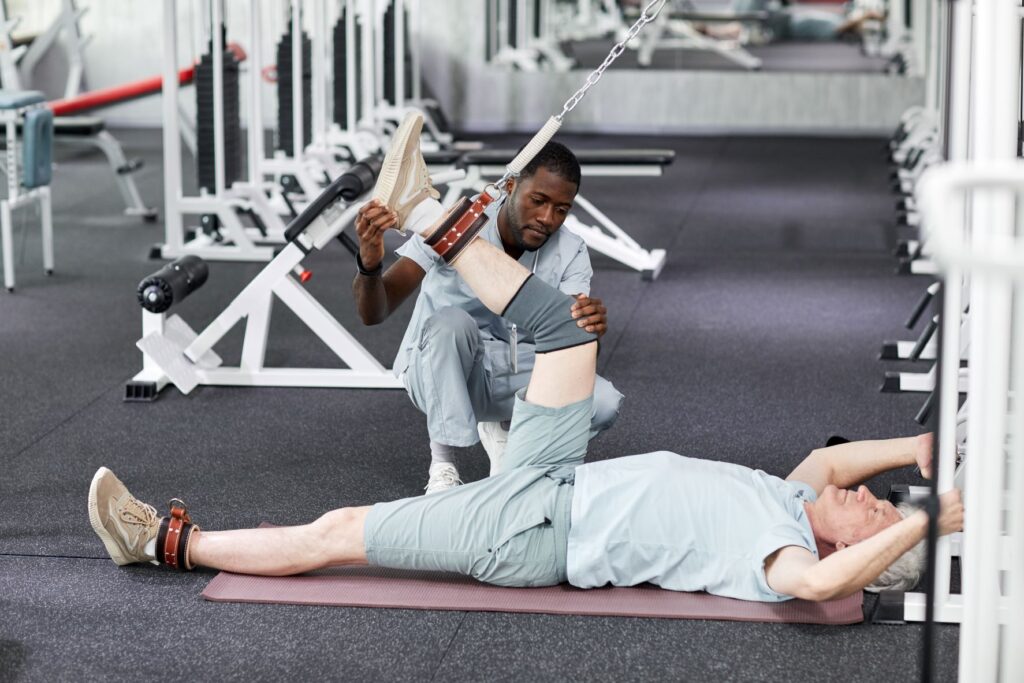What Does Physical Therapy Do?
Physical therapists use a range of techniques to help people recover from injuries or other conditions. These include strengthening exercises, rehabilitation, functional integration, and other techniques. These sessions last approximately an hour and help patients identify and resolve issues that affect their physical function. Additionally, physical therapists educate patients on how to properly use cold and hot compresses at their home.
Pain relief
Physical therapy can be an effective treatment option for patients who are suffering from chronic pain. This therapy can include stretching or strengthening exercises to improve flexibility and decrease pain. It can also include manual therapy and education for patients. Some physical therapists may use heat or cold therapy to relieve pain. These methods have been proven to be effective for many patients but should not be considered a replacement for medical advice. If you are suffering from chronic pain, you should seek the advice of your doctor before trying any type of treatment.
The goal of physical therapy is to reduce the patient’s dependence on pain medications and invasive procedures. Many chronic pain sufferers rely on anti-inflammatory medications to treat their pain, but these medications can become habit forming and lead to addiction. In addition, they can lead to overdose and withdrawal symptoms. Corticosteroids are another option for pain relief, but these medications can also cause side effects. A doctor will recommend several options to reduce the chance of addiction.
Strengthening exercises
Physical therapy uses strengthening exercises to help patients recover from an injury or illness. Physical therapists use strengthening exercises during rehabilitation to increase muscle strength and mobility. These exercises can improve body alignment, reduce joint stress, and make daily activities easier. Patients who have recently had surgery can also benefit from these exercises.

Strengthening exercises are very important for patients who need to be able to walk or stand independently. These exercises aid in balancing the patient while standing and shifting their weight from one side of the body to the other. They hold onto parallel bars and the therapist supports them as they shift their weight. The exercises may also involve the use of a brace or orthotic device.
Functional integration
Functional integration is a movement education method that connects learning with movement. Feldenkrais’s personal experience inspired him to create this method, which has been recognized all over the world. The method is taught in two ways: through group classes or in one-on-one sessions. A lesson usually lasts 45 minutes.
It works by tapping the nervous system and utilizing continuous integration of body sensations. This approach improves mobility and coordination, reduces pain, and helps patients become more aware of their body. It can also reduce anxiety and the “office syndrome” many sufferers experience. This method allows patients to return to their daily activities without pain.
Restoring range of motion
Athletes can benefit from physical therapy to improve their range of motion. A restricted range of motion can cause future injury and decrease in performance. Therefore, it is important to work to regain range of motion to ensure a speedy return to play.
Range of motion is the amount of movement a joint has in each movement plane. This range can be severely limited by many factors, such as injury, surgery, weak muscle, scar tissue, or bony abnormalities. Understanding the source of the injury is key to restoring range.
Prevention of scar tissue buildup
Physical therapy can be helpful if you have recently sustained an injury. It can prevent scar tissue from building up and promote healthy movement. A physical therapist will review your medical history and ask about the cause of your scar tissue. The physical therapist will then evaluate your strength, range, motion, and sensations to determine the best treatment. Manual tension is a technique where the physical therapist applies light pressure to the affected area to actively lengthen the muscles.
Manual techniques can be used for breaking up scar tissue and improving mobility. Physical therapists can stretch scar tissue using a variety of manual tools. A special instrument called an instrument-assistedsoft tissue manipulation (ASTYM) or a Graston device may also be used by a physical therapist. These techniques can help to break up scar tissue by causing mechanical modifications at the cellular level.
Treatment after stroke
Stroke recovery is incomplete without physical therapy. Inpatient rehabilitation programs are the most common for stroke victims. After that, many patients move on to outpatient therapy. Rehabilitation is designed to help stroke patients regain their function. Therapy can be as simple a holding a tube with one hand and removing the cap with the other.
Therapy can also be used to help patients with depression or other mental disorders. To help them adjust to their new life after a stroke, many stroke survivors join patient support groups. For a list of such support groups, patients can ask their doctor. Support from family and friends is also beneficial. Dependent on the severity of the strokes, doctors may prescribe medication to prevent future strokes. Some patients may need surgery to repair structural damage to the brain.